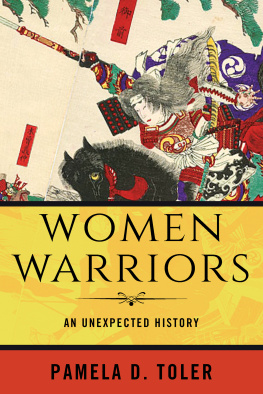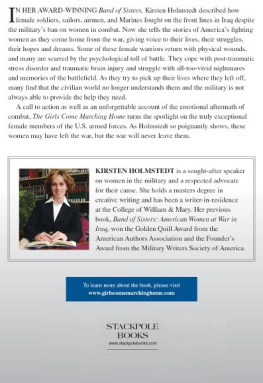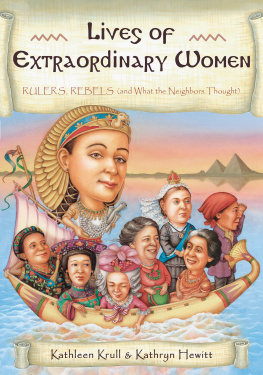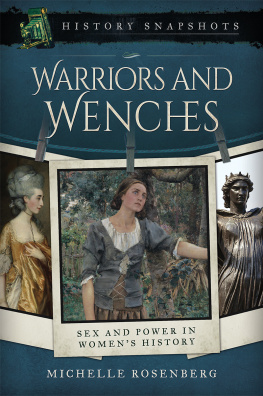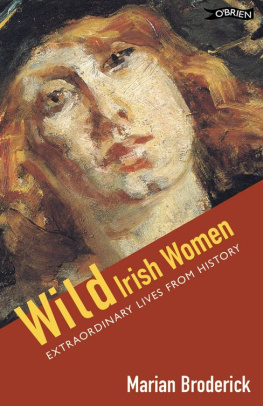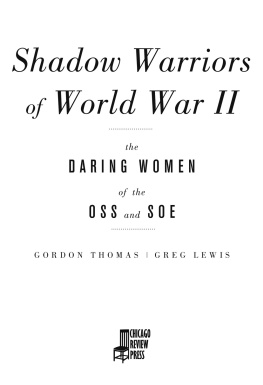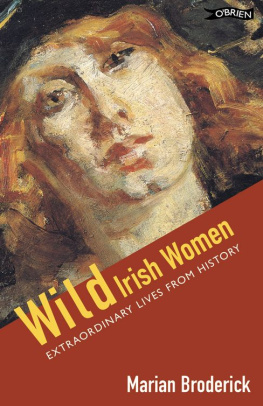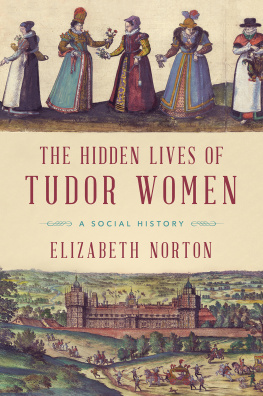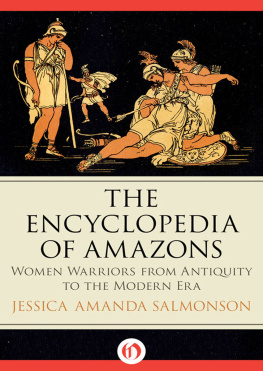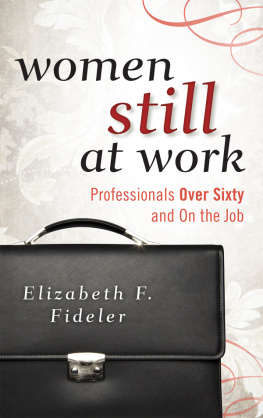The idea that some women in the past had taken up arms and fought beside their brothers, fathers, cousins, and neighbors was not a new one to me. As a nerdy little girl growing up outside Wilsons Creek National Battlefield in southwest Missouri, I learned that women disguised themselves as men to fight in the American Civil War. As a nerdy tweenager I read everything I could find on Joan of Arc, from biographies designed to give young girls role models to George Bernard Shaws Saint Joan.

A late-nineteenth-century image of Lakshmi Bai, the Rani of Jhansialready honored as a national heroine.
Once I was aware that women warriors had existed in many times and places, I ran across references to them everywhere. I began to collect their stories in a casual way, adding notes on the Trung sisters of Vietnam, or Queen Njinga of Angola, or Jeanne Hachette of France to the file when I ran across them. I didnt do much with those stories beyond an occasional article or blog post. I had other things to write and the world at large didnt seem to share my fascination with women warriors.
Thats changed. Women warriors have entered the cultural mainstream. Fantasy heroines and historical female soldiers engage the public imagination in serious historical fiction, television series, comic books, and war-gaming forums. Not to mention the popular excitement over Patty Jenkinss Wonder Woman and the women warriors of Wakanda in Ryan Cooglers Black Pantherboth of which not only enjoyed boxoffice success but also served as catalysts for cultural discussion.
Real-life women warriors evoke a more complicated public response. For more than twenty years, beginning with the Persian Gulf War, American servicewomen have fought officially in air and naval units and unofficially in raids and security patrols on the ground. Public perception is divided on the subject. Female combat veterans run political campaigns that center on their military service, as their male counterparts have done since the first days of the United States. They are honored as heroes at major league baseball games and showcased on the covers of publications as diverse as the New York Times and StreetWise, the newspaper peddled by homeless people on the streets of Chicago. They even appear as central characters in romance novelswhere their unlikely presence is testimony that women in the military have become a fact of American life. At the same time, despite this apparent public acceptance, the repeal of the ground combat exclusion policy in 2013 and the militarys grindingly slow efforts to implement that change have generated outraged howls from those who argue that women cannot and should not fighthowls that did not diminish when two women successfully completed Ranger School, the US Armys elite infantry training program, in October 2015. In an effort to avoid the media frenzy, positive and negative, that followed the news that women had received their Ranger tabs, the military announced more recent gains by Americas servicewomensuch as the first woman to complete Marine Corps infantry officer training in September 2017 and the six women of the Eighty-Second Airborne Division who earned the Expert Infantryman Badge in January 2018with less fanfare. They succeeded in avoiding angry headlines, but not ugliness in the comments sections of online news articles.
INSIGNIFICANT EXCEPTIONS?
Both the current appeal of pop cultural heroines and ongoing battles over the role of female soldiers in the modern military assume women who go to war are historical anomalies: Joan of Arc, not G.I. Joan. This position is summed up in military historian John Keegans magnificently inaccurate claim that warfare is... the one human activity from which women, with the most insignificant exceptions [emphasis mine], have always and everywhere stood apart.... Women have followed the drum, nursed the wounded, tended the field and herded the flocks when the man of the family has followed his leader, have even dug the trenches for men to defend and laboured in the workshops to send them their weapons. Women, however, do not fight... and they never, in any military sense, fight men.
In fact, women have always gone to war: fighting to avenge their families, defend their homes (or cities or nations), win independence from a foreign power, expand their kingdoms boundaries, or satisfy their ambition.
A handful of women warriors have elbowed their way into historical accounts. Sometimes they are remembered in their home countries as national heroines, even if they have been forgotten by the larger world. But for the most part, women warriorsin uniform or not, eager to fight or driven by desperation to defend themselveshave been pushed into the historical shadows, hidden in the footnotes, or half-erased. Some disappeared because they disguised themselves as men in order to fight, appearing in the records as women only when their disguises failed. Some have been defined out of the picture: my favorite version of this is the historian who claimed that a woman who fought during the French siege of Zaragoza in 1808 did not count as a combatant because her life was in danger and she was defending herself. Others who fought in the distant past are dismissed as legends, myths, folklore, exaggerations, or just plain lies on the grounds that records of their actions/existence are slightan indignity to which their male counterparts are less prone. Some women warriors are deliberately written out of history. After World War II, for instance, the Soviet government explicitly instructed Russias squadrons of highly decorated female fighter pilots not to speak of their wartime experiences. Even the history of modern female soldiers has begun to blur. When I told people I was writing about women warriors, most were startled to realize that American women have officially served in air and naval combat units for the past twenty years.
At some level, the disappearance of women warriors is part of our larger tendency to write history as his story. The tendency is explicit in the world of military history. As military historian David Hay points out, The assumption that war is something essentially malebe it the apotheosis of masculinity or the incarnation of patriarchyhas banned the study of the female combatant to academic purgatory.
In the case of women warriors, the tendency to erase womens roles in history is complicated by the contested question of whether women should fight. Many people who cheer for the highly sexualized women warriors of popular culture are less comfortable when confronted with real-life images of camouflage-wearing women with shaved heads at boot camp or Ranger School.
If we look closely at debates over whether women should be allowed to participate in direct combat in the American military, it becomes clear that those who stand on opposite sides of the argument are not even asking the same questionsand that they havent for a long time. on the armys effectiveness, the masculinization of female soldiers, and the return to a peacetime culture of female domesticity.

